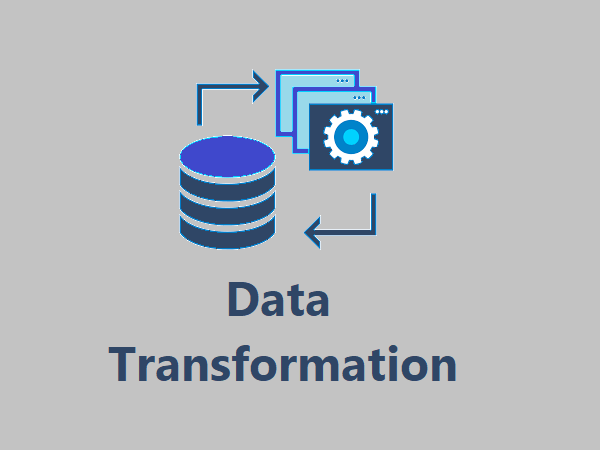With the growth in technology and data generation, companies face many difficulties managing data seamlessly and securely. That’s why hybrid cloud solutions were introduced, blending on-premies, private, and public cloud resources so that businesses can flexibly maintain a competitive edge in the market.
However, managing a hybrid cloud and ensuring its security is essential to overcoming all the issues and challenges that businesses usually face. That’s why a strong security strategy is required to protect crucial information, maintain regulatory compliance, and ensure operational efficiency.
Here are nine security tips for seamless data protection.
1. Understand Your Shared Responsibility Model
Understanding the shared responsibility model is essential in a hybrid cloud environment. Cloud providers secure their infrastructure, but the organization often has the responsibility of data protection, access management, and application security. To avoid security gaps, it’s critical to delineate where the cloud provider’s responsibility ends and where yours begins.
Best Practices:
- Engage with cloud providers to clarify security responsibilities.
- Map out a detailed matrix identifying which responsibilities you manage and which are the provider’s domain.
2. Implement Strong Identity and Access Management (IAM)
Managing access to your hybrid cloud environment is fundamental to security. Identity and Access Management (IAM) ensures that only authorized personnel can access critical resources. IAM becomes more complex with a mixed cloud as you must secure both on-premises and cloud resources. Use multi-factor authentication (MFA), role-based access control (RBAC), and single sign-on (SSO) to bolster access management.
Best Practices:
- Enforce multi-factor authentication (MFA) for all access points to the cloud environment.
- Use role-based access control (RBAC) to restrict access based on user roles and responsibilities.
3. Data Encryption: Encrypt Data at All Stages
Data encryption is a non-negotiable aspect of hybrid cloud security. Encryption protects data at rest, in transit, and during processing, ensuring that sensitive information remains secure even if it is intercepted or accessed by unauthorized parties.
Best Practices:
- Implement end-to-end encryption for data at rest and in transit.
- Use Advanced Encryption Standards (AES-256) for robust encryption and consider custom encryption keys for sensitive data.
4. Regularly Assess and Patch Vulnerabilities
Vulnerabilities constantly evolve, and keeping up with patches and security updates is crucial for hybrid cloud protection. Regular vulnerability assessments help identify potential weaknesses, while timely patching prevents known threats from compromising your systems.
Best Practices:
- Conduct regular vulnerability assessments on both cloud and on-premises resources.
- Automate patch management to ensure timely updates across all platforms.
5. Monitor Data and Network Traffic in Real Time
Monitoring can be complex yet necessary with hybrid-type cloud infrastructures. Continuous monitoring lets you detect anomalies, unauthorized access attempts, and potential breaches in real-time. Implementing solutions like Security Information and Event Management (SIEM) systems provides a consolidated view of network activity across environments, allowing for quick identification and resolution of suspicious activities.
Best Practices:
- Deploy Security Information and Event Management (SIEM) systems to centralize data monitoring.
- Establish alerts for abnormal behavior, such as unusual login attempts or large data transfers.
6. Establish Consistent Security Policies Across Environments
One key challenge with a mixed cloud is ensuring consistent security policies across disparate environments. Unified policies help mitigate security risks by standardizing security practices across all platforms. With standardized policies, consistency can lead to security gaps and leave data vulnerable.
Best Practices:
- Implement uniform security policies and controls across on-premises and cloud resources.
- Regularly review and update policies to reflect new risks, compliance requirements, and best practices.
7. Implement Data Loss Prevention (DLP) Mechanisms
Data Loss Prevention (DLP) solutions are essential for preventing unauthorized access, accidental data sharing, and leakage. DLP solutions track data movement, monitor for unauthorized access attempts, and prevent data from leaving secure environments. In a hybrid cloud-based environment, DLP helps maintain visibility over data across cloud and on-premises systems.
Best Practices:
- Deploy DLP tools to monitor sensitive data and prevent unauthorized access.
- Define clear data protection policies, such as what data can and cannot leave the organization’s systems.
8. Create Robust Disaster Recovery and Backup Plans
A security strategy is only complete with a disaster recovery (DR) and a backup plan. A mixed cloud environment requires a DR plan that spans both on-premises and cloud resources.
Best Practices:
- Develop a disaster recovery plan with backup redundancy across multiple locations.
- Automated tools conduct regular backups and ensure data consistency across environments.
- Regularly test disaster recovery plans to ensure they meet recovery time objectives (RTO) and recovery point objectives (RPO).
9. Stay Compliant with Industry Regulations and Standards
Regulatory compliance is essential to mixed cloud security, particularly for finance, healthcare, and government industries. Compliance requirements often mandate specific data protection measures, reporting protocols, and access control policies.
Best Practices:
- To stay current on compliance requirements, regularly review applicable regulations, such as GDPR, HIPAA, and PCI-DSS.
- Implement auditing and reporting mechanisms to demonstrate compliance in the event of an inspection.
Conclusion
Securing a hybrid cloud-based environment requires a mix of strong strategies and better approaches to enable companies to handle both on-premises and cloud security issues. The nine tips mentioned above in the blog can help companies maintain a good security posture and enable them to compete in the market efficiently. These tips ensure that your crucial data remains safe and secure across all environments.
Read More: How to Choose the Right Hybrid Cloud Computing for Supercomputers






